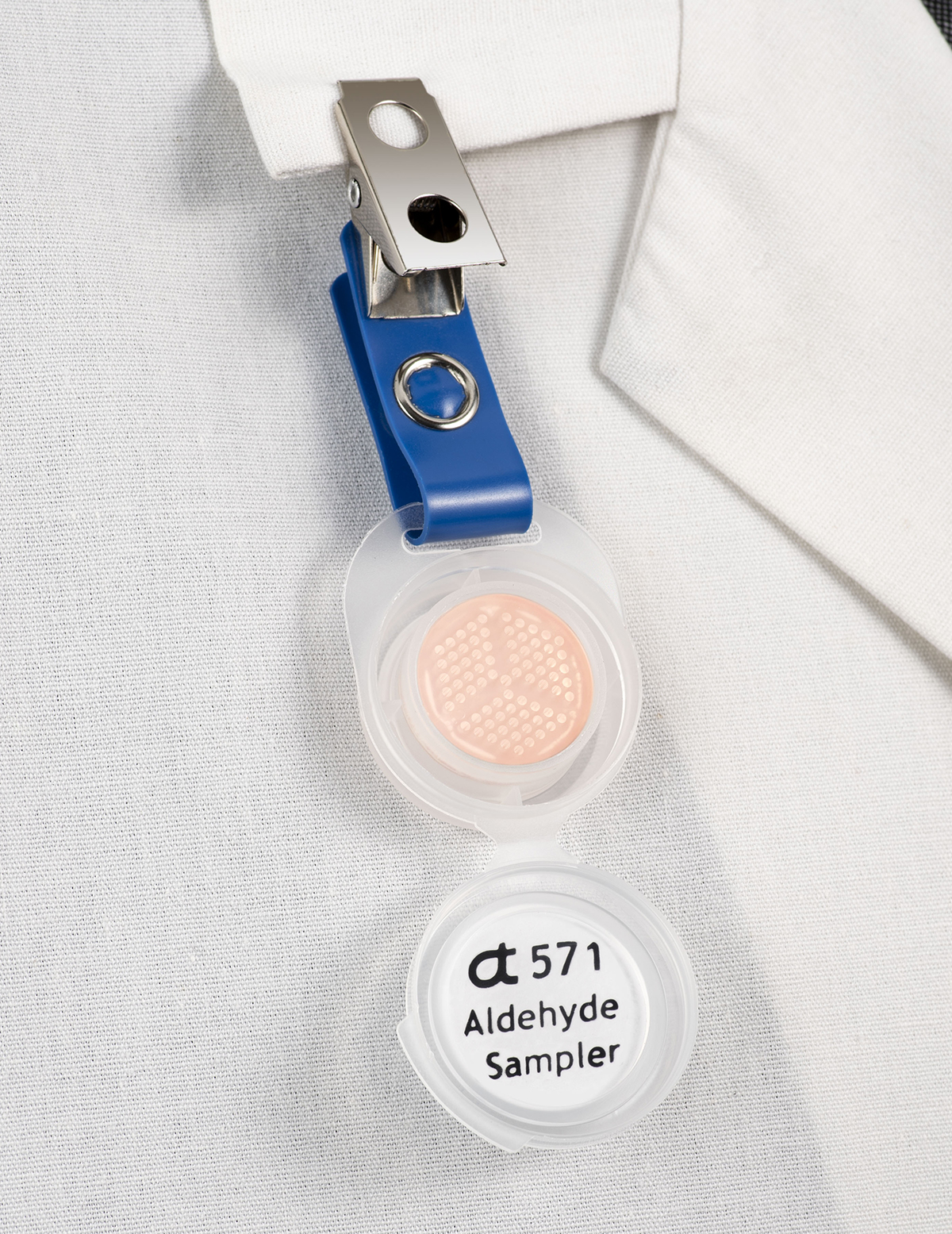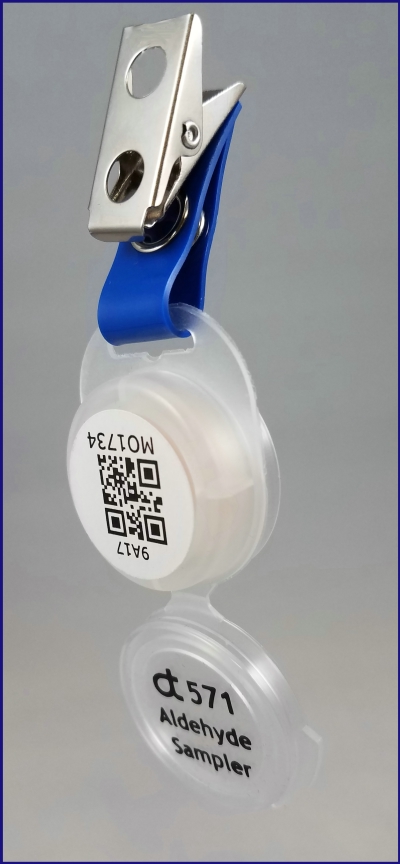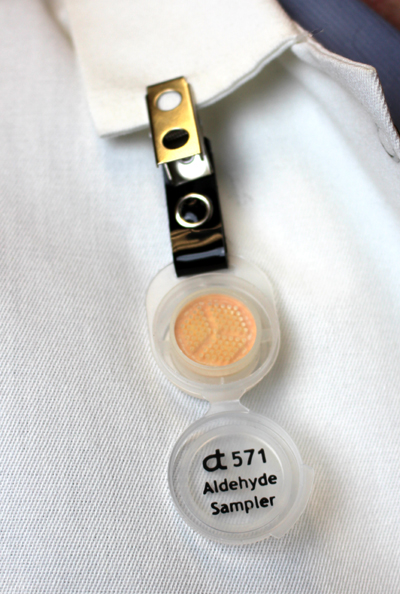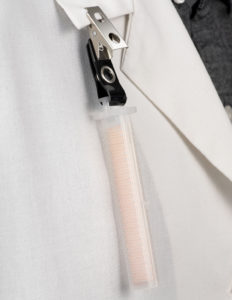Description
Aldehydes are collected on a glass fiber filter treated with 2,4-dinitrophenylhydrazine (DNPH) and phosphoric acid. The sample filter is extracted with acetonitrile and analyzed by HPLC using a UV detector. Badges are assembled under a blanket of nitrogen to reduce background levels.
For Cidex (glutaraldehyde) and Cidex OPA (o-phthalaldehyde), use the 581 badge for STEL/Ceiling monitoring.
Customers who plan to use the NIOSH REL-TWA, NIOSH Ceiling, or other regulatory limits significantly lower than OSHA’s to evaluate their formaldehyde results should use the 581 badge, not the 571. For example, the NIOSH REL-TWA is 0.016 ppm, which is over 46 times lower than the OSHA PEL of 0.75 ppm. Because of this, the faster-sampling 581 with an 8-hour reporting limit of 0.0014 ppm (and a 15-minute reporting limit of 0.044 ppm) is preferred.
This badge collects the following:
- Formaldehyde (formalin)
- Glutaraldehyde (Cidex)
- o-Phthalaldehyde (Cidex OPA)
- Acetaldehyde
- Benzaldehyde
- Butyraldehyde
- Crotonaldehyde
- Hexaldehyde
- Propionaldehyde
- Tolualdehyde
- Valeraldehyde
Special Notes
Dusty Environments –
Particle screens are designed to prevent particulates containing or generating formaldehyde from getting inside the sampler and causing a high biased result. Screens are only applicable in a few situations. If you think you might have an environment that requires a particle screen, you can order them here or contact us to discuss further (part# C3101, $20 for 10 screens). See our Instructions for Use for more info.
Dry Environments –
When the relative humidity is below 20%, the badge will start to give a low biased result. OSHA performed a validation on three aldehyde monitors using DNPH chemistry, like the 571. In their study, they also looked at the effect of low humidity on results and found that all badges reacted the same. Below is a table of the results from the OSHA website.
| % Relative Humidity | % of theoretical for ChemDisk-AL |
| 20 | 93.5 |
| 15 | 85.4 |
| 10 | 77.6 |
| 5 | 66.1 |
If a customer wanted to adjust their results based on the OSHA data, that sounds reasonable to us.
Formalin / Methanol Environments
Also in the OSHA method, they studied the effect of methanol on DNPH chemistry diffusion monitors. Unlike the humidity issue, Assay Technology took issue with the severity of this effect. Please see Dr. Manning’s response: Dr. Manning weighs in.



